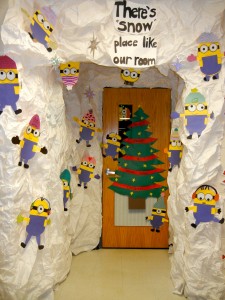Once students get used to the idea that they can expect spelling to make sense, and that they can figure out a word’s base and meaning by peeling off its affixes, the school day is different. These days we talk “words” all day long. For example, yesterday afternoon we were reading about the American Revolution. There was mention of the “Intolerable Acts”. I asked about the word <intolerable>. Immediately the suffix <able> and the prefix<in> were spotted. Someone else noted that the suffix <ate> could be added to the base <toler> to create the word <tolerate>. Then we talked about the meaning of the prefix <in> and the meaning of the words <tolerable> and <intolerable>.
As we were finishing up that discussion, Maya raised her hand and said, ” I’ve been wondering about the word <debt>. I’ve been wondering if the <b> is there because the word is related to the word <debit>. Do you think that could be it?” At that moment I was all aglow inside. Here is my evidence that Maya has learned that letters are not just randomly assigned to words! Maya has learned to look for a word’s spelling to make sense! She also knows that looking at a word’s relatives is a logical first step when answering questions about a word’s spelling!
Another example is this morning’s word sum for <motion>. The students recognized that the base would be <mote> and the suffix <ion>. I asked why the <e> needed to be on the base word. Sam gave me the example of adding an <ing> suffix, and that if the <e> wasn’t on the base, the consonant <t> would be forced to double. I asked if there was other evidence that could be used. The students didn’t quite get where I was going until we reviewed what we knew about bound bases. They need an affix to surface in a word. Since, at this point, we had only added suffixes to the base, I asked if anyone could think of a prefix that could be added to this base. Rather quickly someone thought of promote, and just as quickly someone else said, “demote”. There it was. The single silent <e> was part of the base. Here was another piece of evidence that the base was indeed <mote>.
This afternoon in math we began a chapter on division, so I wrote the word on the board and asked for other words that might pertain to division. The words divide and divisor were added to the list. Since these words seemed similar, I asked what the students were noticing. I thought someone would notice that the base of divide seemed to be <vide> and the base of division and divisor seemed to be <vise>. Instead they noticed things I hadn’t (which always delights me!)
1. Brooke said, ” I think the <di> might be a prefix, but I know for sure that <ion> is a suffix, so my word sum is <divise> + <ion> -> <division>. I loved the fact that she vocalized her hypothesis, but went with what she had evidence for (prior research).
2. Ryan said, ” I know that <bi> can mean life or two, and I remember that Old Grouch told us <di> can also mean two, so I am thinking that the <di> in these words might mean two.” Here again, I have evidence that orthographic concepts are taking root! Ryan is making connections between previously investigated prefixes and new words, and then he’s making logical guesses. We didn’t have the time at that moment to follow up with Ryan’s hypothesis, but we will do so tomorrow. That’s when I expect the understanding will deepen.

